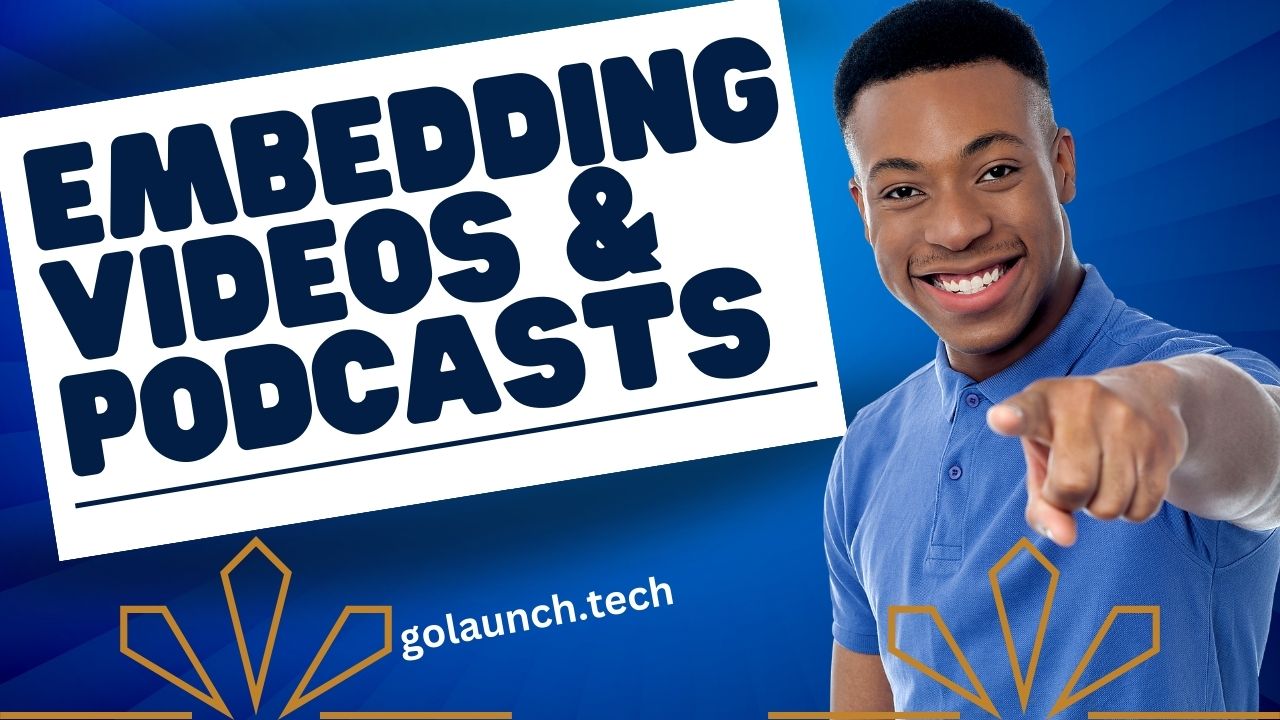Introduction:
Embedding videos and podcasts into your content can significantly enhance user engagement and time spent on your website or platform. It provides a multimedia experience that caters to diverse learning and consumption preferences, enriching the content's value and appeal. Here’s a guide on how to effectively embed videos and podcasts into your digital content:
1. Choose Relevant Multimedia Content:
- Align with Audience Interests: Select videos and podcasts that resonate with your audience's preferences, needs, and interests.
- Consider Content Quality: Opt for high-quality, clear, and professionally produced multimedia content.
2. Utilize Reliable Hosting Platforms:
- Select a Robust Hosting Platform: Use platforms like YouTube for videos and Libsyn or Podbean for podcasts to ensure seamless streaming and accessibility.
- Opt for Secure Platforms: Prioritize platforms that offer secure, embeddable links to protect your and your audience's data.
3. Optimize Multimedia for SEO:
- Include Transcriptions: Provide transcriptions for videos and podcasts to improve SEO and accessibility.
- Use Descriptive Titles and Meta Descriptions: Optimize titles, tags, and descriptions with relevant keywords to enhance discoverability.
4. Embedding Process:
- Generate Embed Code: Once the multimedia is hosted, generate the embed code from the hosting platform.
- Insert the Embed Code: Place the embed code in your content management system (CMS) or website code where you want the multimedia content to appear.
5. Customize the Embedded Player:
- Adjust Size and Dimensions: Modify the width and height of the multimedia player to suit the layout of your webpage.
- Configure Auto-play Options: Decide whether to enable or disable auto-play based on user experience considerations.
6. Test Playback on Different Devices:
- Ensure Cross-platform Compatibility: Verify that the embedded content plays smoothly on various devices and browsers.
- Optimize for Mobile: Confirm that the multimedia is responsive and provides an optimal viewing experience on mobile devices.
7. Monitor Engagement and Analyze Performance:
- Track Viewership and Interaction: Use analytics tools to monitor how users interact with the embedded content.
- Gather Insights: Assess the performance and impact of the multimedia content on user engagement and conversion.
8. Encourage Social Sharing:
- Integrate Social Share Buttons: Allow users to easily share the multimedia content on their social media platforms.
- Promote Sharing through CTAs: Include compelling call-to-actions to encourage users to share the content.
9. Respect Copyright and Intellectual Property Rights:
- Use Licensed or Original Content: Embed content that you have the right to use, either through licensing or ownership.
- Credit Original Creators: Properly attribute the content to the original creators and respect copyright laws and guidelines.
10. Enhance User Experience:
- Use Captions and Subtitles: Provide captions or subtitles to accommodate users with hearing impairments and those viewing in noisy or silent environments.
- Offer Download Options: If possible, provide options for users to download the multimedia content for offline consumption.
Conclusion:
Embedding videos and podcasts can substantially enrich your digital content, improving user engagement and content diversity. By choosing relevant, high-quality multimedia content, optimizing it for SEO, and embedding it seamlessly, you can create a more interactive and inclusive user experience. Regularly analyzing the performance and encouraging social sharing can further increase the reach and impact of your embedded multimedia content. Always remember to respect copyright and offer due credit to the original creators while enhancing accessibility with captions and transcriptions.
